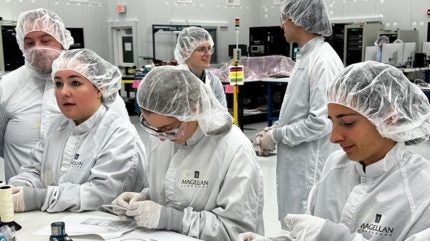
The UK is set to join forces with Canada to launch the Redwing microsatellite Space Domain Awareness (SDA) mission to enhance space domain awareness.
Scheduled for launch in 2027, Redwing aims to track objects in crowded orbits using advanced sensors and provide near real-time tasking in response to evolving space events.
Comparable in size to a small washing machine, the satellite will be directed by the Defence Research and Development Canada (DRDC), an agency of the Department of National Defence.
It will deploy a nanosatellite, known as Little Innovator in Space Situational Awareness (LISSA), which will carry a payload from the UK’s Defence Science and Technology Laboratory (Dstl) on behalf of the Ministry of Defence (MOD) and UK Space Command.
Dstl space research and development programme manager Dr Gemma Bagheri said: “Space is increasingly congested and it is vital that we keep pace with new and emerging threats. The collaboration with our Canadian partners will enable us to improve the characterisation of objects and maintain security in space to protect our mutual interests.”
LISSA, approximately the size of a cereal box, will incorporate a Dstl experimental short-wave infrared camera as its primary payload.
How well do you really know your competitors?
Access the most comprehensive Company Profiles on the market, powered by GlobalData. Save hours of research. Gain competitive edge.

Thank you!
Your download email will arrive shortly
Not ready to buy yet? Download a free sample
We are confident about the unique quality of our Company Profiles. However, we want you to make the most beneficial decision for your business, so we offer a free sample that you can download by submitting the below form
By GlobalDataOnce in orbit, Redwing and LISSA will operate in tandem, flying in a sun-synchronous low Earth orbit at about 575km above the Earth and up to 200km apart.
The mission’s focus will be on assessing SWIR camera’s capabilities , with a particular emphasis on monitoring the South Pole of Earth.
This area is less observed compared to the North Pole, and the glare from the Antarctic ice sheet can obscure the identification of objects in orbit. The findings from this mission will inform future space surveillance strategies.
DRDC Director of Research and Development for the Defend North America strategic focus area Scott McLelland said: “The space domain continues to change and evolve and requires space faring nations to innovate to keep informed of the security situation in the space domain. DRDC is thrilled to have Dstl participate in the Redwing mission to help grow both nations’ defence space programmes.”
Furthermore, the research cooperation opens avenues for joint research and development of prototype infrastructure and data processing architecture.
Magellan Aerospace has been tasked with the design, construction, launch preparation, and operation of both Redwing and LISSA.
The University of Manitoba will be responsible for building LISSA, while Bornea Dynamics was selected Dstl to produce and qualify the SWIR camera payload hardware.



